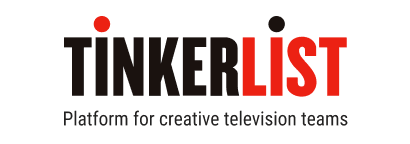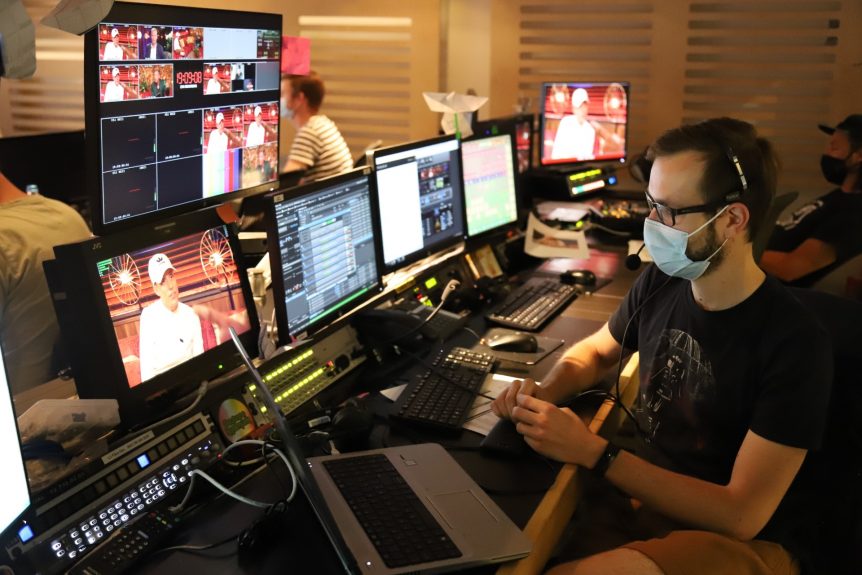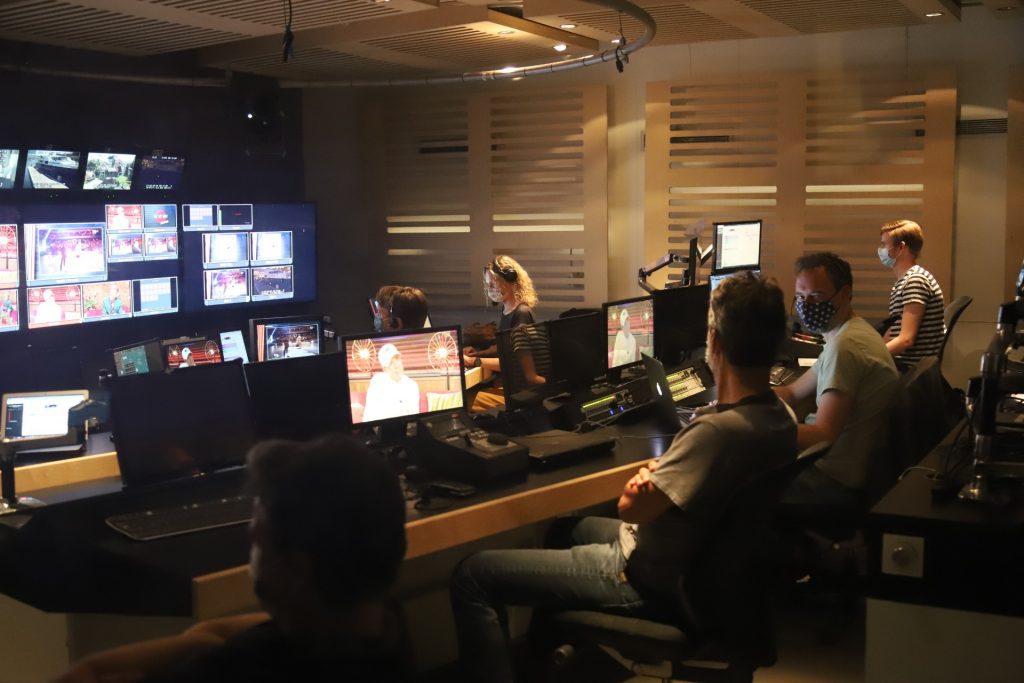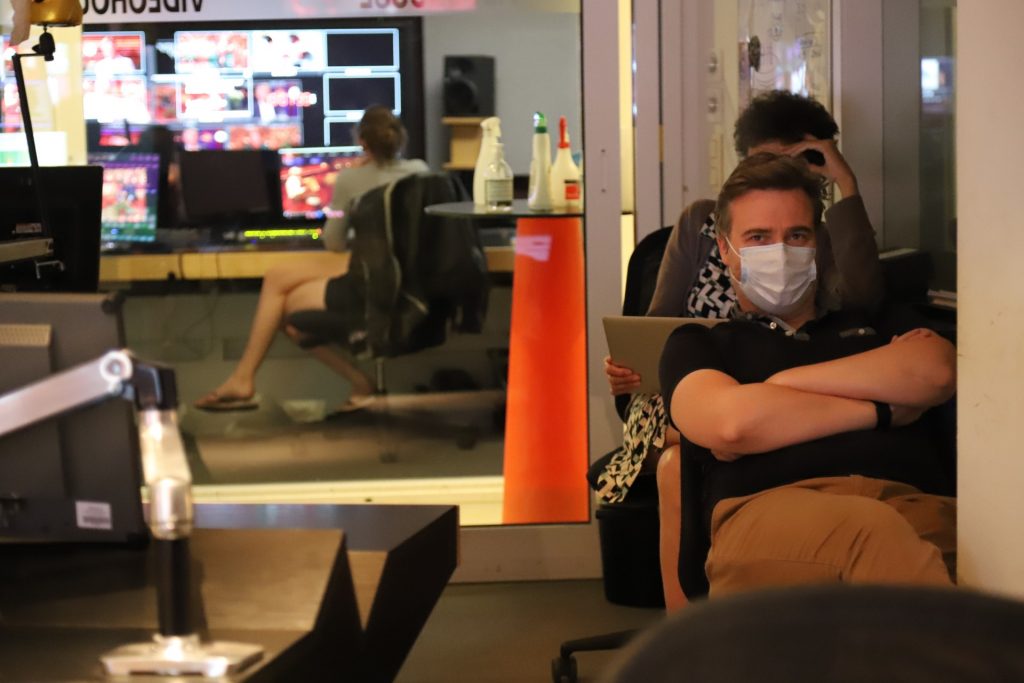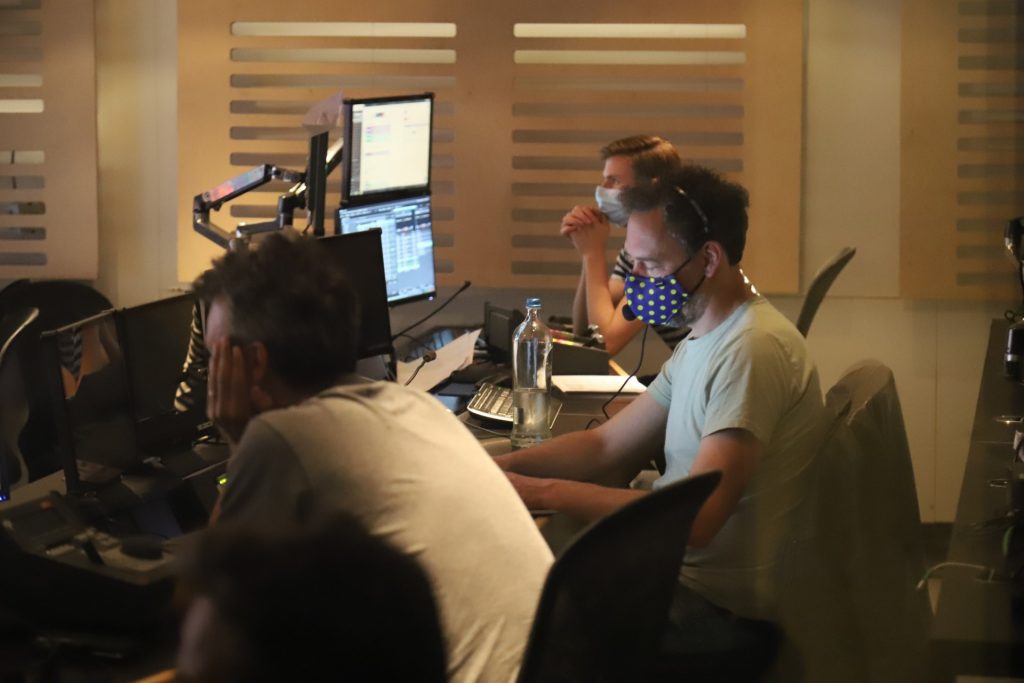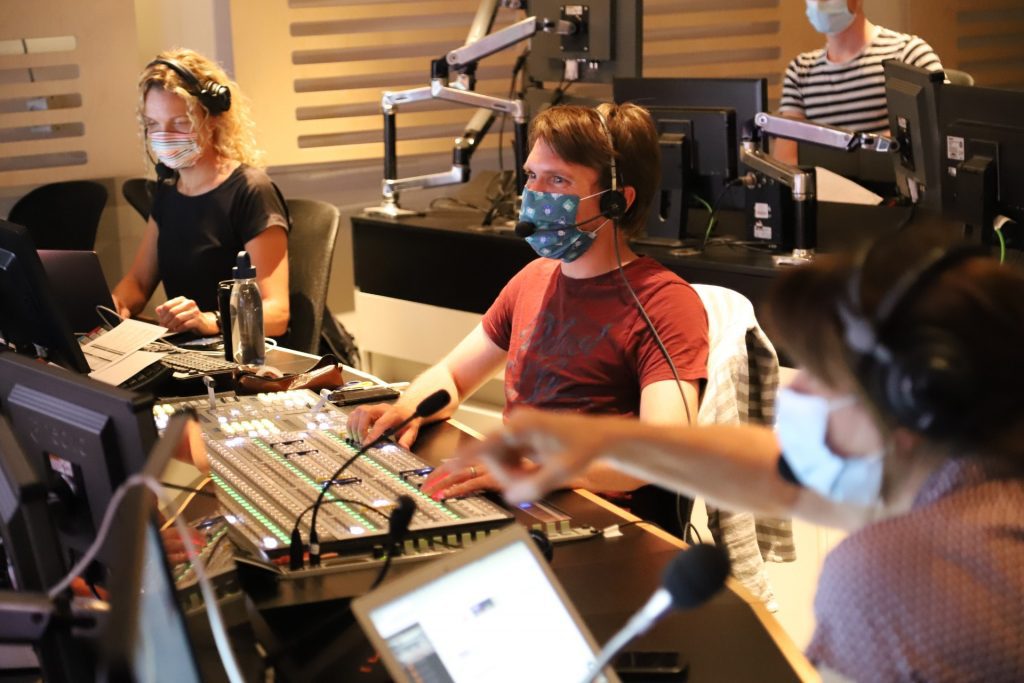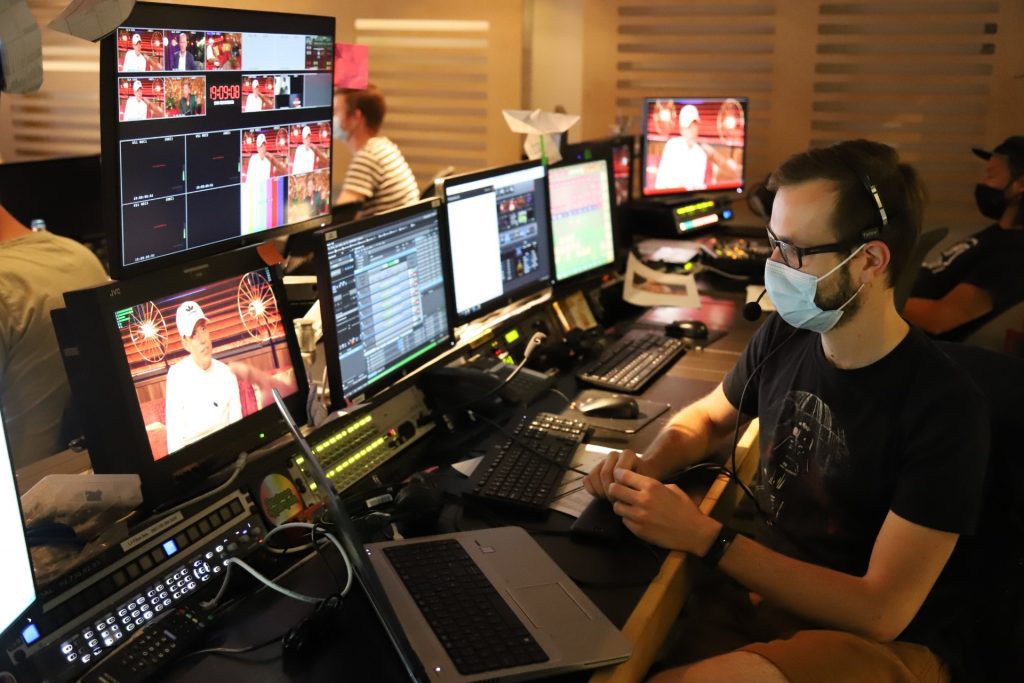When the Corona virus hit the globe, it had disastrous consequences on so many levels. Even for TV shows, such as talk shows, game shows and big live events with audiences. But as we like to phrase it in our business: ‘The show must go on!’ Right?
First reaction when we were facing the steep curve of the pandemic was to panic and shut down, to put all live shows on hold or even to cancel upcoming productions. But quickly, TV production teams realised that this pandemic would not blow over in a few days, weeks or even months and that they should reinvent the way they create television shows and adjust to the new standards.
We took a look behind the scenes of Gert Late Night, a TV talk show hosted live from a boat in Antwerp (Belgium), to discover what their best practices are during the COVID-19 crisis.
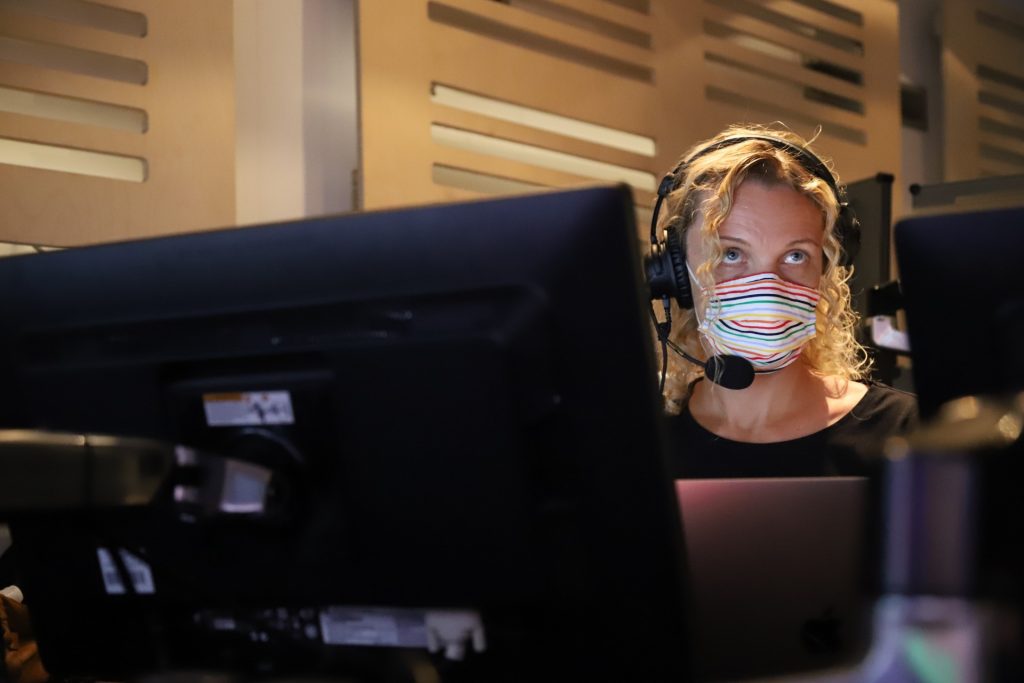
A full remote production: broadcasting live from the studio on a boat
Gert Late Night (Dedsit) is a daily talk show, in which hosts Gert and James invite two celebrities to spend a whole week on their yacht in the harbor of Antwerp. Hosts and guests are captured during the day enjoying breakfast on the deck, going to lunch meetings and daily activities. In the evening, there’s a live talk show broadcast from the boat, along with more guests and an audience.
Their 7th season was about to kick off, right when the Corona pandemic hit Belgium full force. They took some time to think about what to do and came up with the idea to continue their show, by enabling a fully remote production and adapting the concept of the show.
Step-by-step: How to set up a remote TV production?
First of all, the crew was split up and divided over 3 different locations:
- The gallery, with the entire technical crew and production in Brussels
- Studio with a limited technical and production crew in Antwerp
- All editorial staff working from their homes
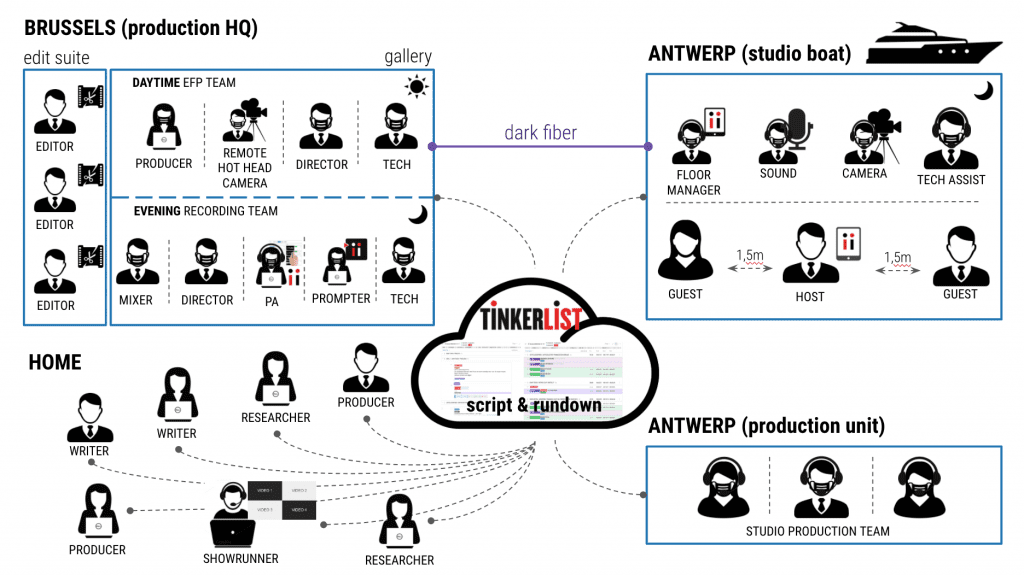
Gallery in a building
Almost 90 % of the technical crew is operating from the remote gallery in Brussels. The gallery houses the director, PA, vision mixer, LSM operator, shading, audio and chief technician. Also operating from this location are the main production crew and post-production editors.
Studio on the boat
The studio is equipped with camera hotheads, which are operated remotely during the day by a camera crew from Brussels. During the live show, only a small technical equipe is on-site: a limited multicam crew, production to take care of the hosts and guests, a sound engineer and a technical manager. Even the teleprompter operator is working remotely from Brussels and is not present in the studio. Instead of reading from static paper cue cards, hosts are consulting the latest version of the script and updates on the presenter tablet.
Telework from home
All preparatory work was done from home, working together on a cloud-based rundown and script in TinkerList. Editorial research, script writing and rundown creating, enriching the scenario with media, estimating timings and preparing technical notes: all done on one cloud-based platform that is continuously updated so everyone stays up to date with the latest changes.
During recording, the show runner also followed the recordings live from his sofa at home. Through a Skype connection with split source screens and a direct intercom with the gallery, he could follow rehearsals and recordings and intervene whenever needed.
Safely apart and yet together: social distance in gallery and studio
In order to comply with safety and health measures as much as possible, the following actions were taken:
- Guaranteeing a social distance of 1,5m at all times, amongst the crew and between hosts and guests
- Moving to a fixed gallery location instead of a smaller gallery truck
- Splitting up the technical crew into different rooms
- Spreading out the crew around the floor
- Mandatory masks to cover mouth and nose for all tech and production staff
- Regular disinfection of hands and equipment
- Communication only via headset or intercom and chat in the platform, avoiding any direct close contact
- No make-up artists to avoid physical contact with hosts or guests
- No audience present in the studio
- Personal microphones and transmitters for hosts and guests, which are regularly disinfected
Paperless production, both ecological and hygienic
The entire production of the show was fully digital, not one piece of paper was used and that’s rather revolutionary in TV production. By exclusively using the editorial workflows, planning & calendar, script and rundown in TinkerList, the crew could eliminate paper use altogether. Even the host goes paperless by using a tablet and a teleprompter, the latter is continuously synchronised with the latest version of the script.
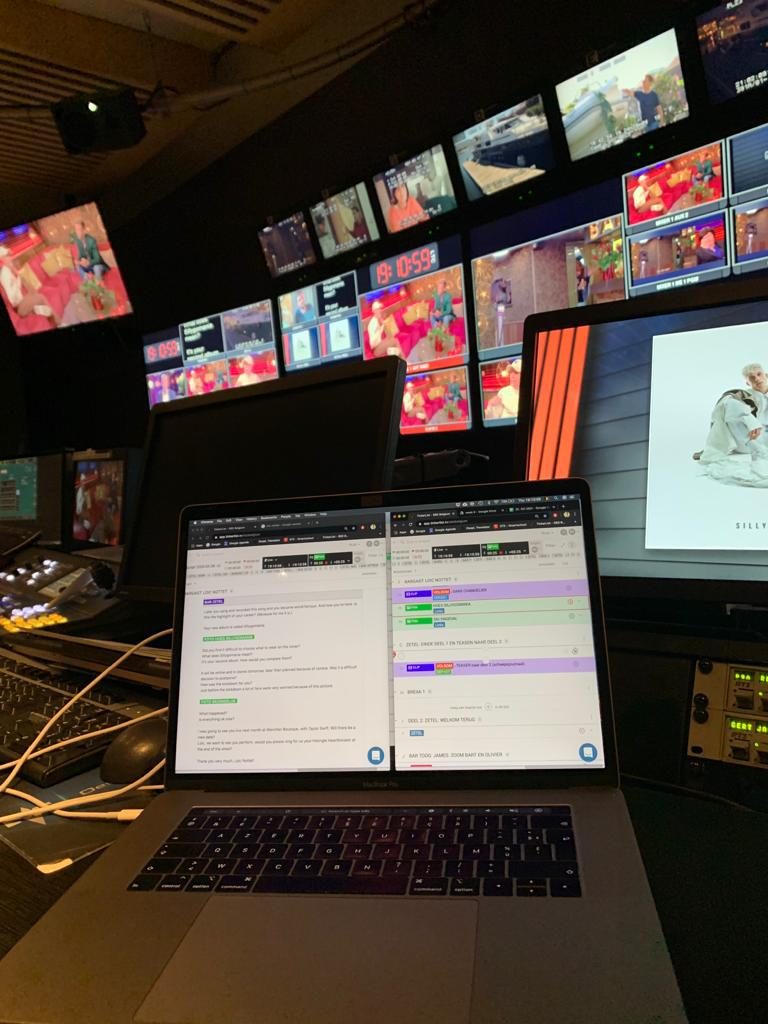
Banning the use of paper documents has many pros during the pandemic:
- Hygiene: no sharing or touching paper documents (potential infection hazards)
- Environment: limiting paper waste and saving trees
- Up-to-date: staying in sync with the latest changes, automatically presented online
- Remote: being in touch with your team without physical meetings, adapting your working schedule to the ‘lockdown’ rhythm and taking control of when and where you work
- Flexible: last minute changes in the show? Quickly dragging and dropping content without needing to send the latest version of the script and running order to the crew.
Mirror, mirror on the wall, can we still produce TV talk shows after all?
Even though the new production workflows seemed complicated at first, it didn’t take long for the crew and hosts to adjust to the new way of working. Quickly, everyone got used to a digital and actually more modern way of TV production. And guess what? Now they can hardly imagine going back to the old workflows.
Conclusion: surviving a worldwide pandemic makes us humans more creative and innovative. Instead of getting stuck in old habits or fear, let’s look to the future and be prepared to tackle a possible next wave of COVID 19 outbreaks.
Let’s help each other during the crisis
With this article, we aim to contribute to knowledge sharing and unite forces in TV and Live Event production business. Feel free to share any best practices or advice with us, so we can spread this knowledge within our network.
Want to know more about our cloud-based scripting and rundown solution and see where we can support each other in setting up a remote production?
